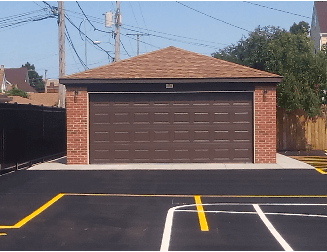A Guide to Garage Door Safety
Posted on December 10th, 2022
Steps to Make Sure Your Electric Garage Door Opener is Operating Safely
It’s possible that because your garage is used primarily for storage rather than for parking your car, you may not have used your garage door opener for some time. Or, perhaps you’ve just moved into a house and you know nothing about the eclectic garage door opener that came with the house. In either case, the following information should help determine if the garage door opener is operating correctly and safely.
Know when the opener was made.
Your garage door opener should have a sticker containing a lot of information, including the year it was manufactured (MFG Date). That date is important because electric garage door openers manufactured from 1993 onward must have two reverse safety features to protect life and limb through an automatic reverse. One of these is mechanical, and the other is photoelectric.
- Mechanical reverse – If the bottom of the door hits an object as the door is going down, the door will reverse.
- Photoelectric reverse – This safety feature consists of two photoelectric garage door sensors mounted on either side of the door, about six inches from the floor. One sensor emits an infrared beam, and the other sensor is a receiver. If anything breaks the beam while the door is descending, the door should stop and reverse.
If the MFG Date indicates your door opener was manufactured before 1993, the chances are you don’t have these safety features, and you should seriously consider installing a new opener.
Make sure the garage door safety sensors are working.
- For the mechanical reverse, place something on the floor in the path of the door, like a couple of bricks. Activate the door opener, and when the descending door encounters the objects you’ve placed there, the door should reverse.
- For the photoelectric reverse, break the beam with some object as the door is descending (but not with your hand or foot!). When the beam is broken, the door should reverse. As an added test, try closing the door while some object is already breaking the beam. The door opener should not move the door at all.
Check the emergency release when the door is closed.
Your system should have an emergency rope. It should be hanging from the rail that runs from the opener to the door. This emergency feature enables you to raise the door manually in case of a power outage. Close your garage door, then pull the release rope to disengage the trolley operator that moves the garage door. If the garage door spring is properly installed and the door is evenly balanced, you should be able to manually open the door easily.
Check and clean the trolley rail.
Finally, as an added step to make sure everything is operating as it should, check the rail that the opener trolley runs on. With a clean dry cloth, remove any dirt and debris that might have collected there and lubricate the rail with a garage rail lubricant.
Contact the Chicago Garage Guys at Absolute Garage Builders
We hope you find these garage door safety tips helpful, and we also hope that if you’re in the market for building a garage in the Chicagoland area, you’ll get in touch with us at Absolute Garage Builders. Whatever you have in mind – workshop, man cave and retreat, or a place to park your classic car – we’re always glad to provide a free, no-obligation estimate, and we have many floor plan options from which to make your choice.
For the first name in garage building in Chicago, contact Absolute Garage Builders today!







